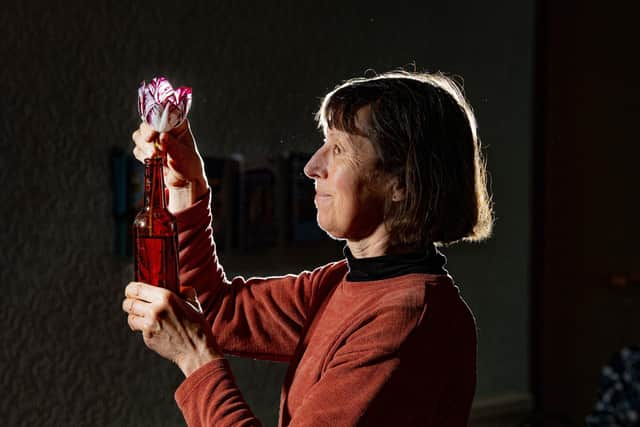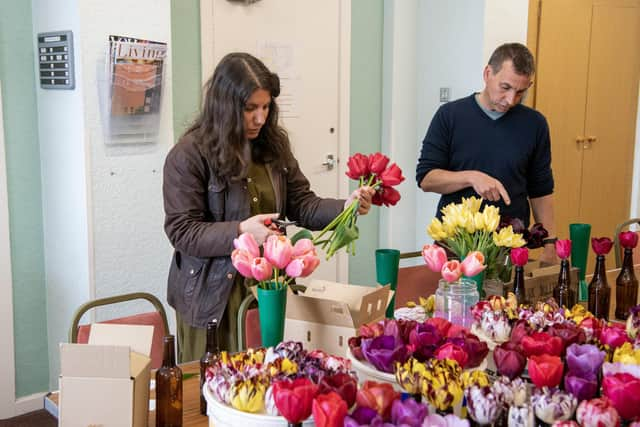Why the Yorkshire city of Wakefield is renowned for its English tulip growing tradition
But less well-known is that the West Yorkshire city is also the home of the English Florists’ Tulip, a rare form of the famous flower which has distinctive ‘feathered’ markings.
The distinctive flower is cultivated by members of the Wakefield and North of England Tulip Society, which was founded almost 200 years ago in 1836, and was celebrated at its annual show earlier this month in Ossett.
Advertisement
Hide AdAdvertisement
Hide AdDespite it still retaining its parochial name, the Society is the last of its kind in the country despite there being almost 200 such clubs back in the English Florist Tulip’s heyday.


But for those who still cultivate the rare variety of flower, there is much reward to be had, explained John Wainwright, a landscape architect who has grown the tulips for some 30 years.
The flower must conform to strict standards, including having a shape like half a hollow ball, and a base colour of white or yellow. The markings are caused by Tulip Breaking Virus, which is not harmful to the plant.
Mr Wainwright said: “The English Florist Tulip is very different from the normal tulip in terms of how they look, and they’re grown completely differently.
Advertisement
Hide AdAdvertisement
Hide Ad“They are not like the Dutch flowers, viewed en masse. They have been bred and raised to have particular qualities. The English Florist Tulip is one small group that developers were fascinated by.


“The reason I got involved was partly because of the history, and from raising new varieties.
"Over the last 200 years, we’ve lost a lot of varieties, but the gene pool is still there.
“But there’s a whole breadth of reasons people get involved - how pictorial they look and how they’re portrayed in flower paintings and photographs.
Advertisement
Hide AdAdvertisement
Hide Ad"The flowers, I suppose, are like jewels. They only flower for a short period and it’s that passion for seeing how amazing they look for that one week.”
The Society’s earliest members would have been working class miners, Mr Wainwright said, but over the past century, numbers of growers have sorely dwindled.
“Back in the mid 1800s, it was really popular and competitive and there were societies in all the main towns.
“Eventually they dwindled, and it went down to two societies back in the 1930s. The Royal National Society then closed, and their remaining trophies were combined with our trophies.”
Advertisement
Hide AdAdvertisement
Hide AdMore than 50 members of the Society exhibited at its 188th annual show in Wrenthorpe on May 7 – moved back a day due to the Coronation, with a special category this year in honour of King Charles.
A smaller show will take place at Wrenthorpe village hall on May 21 and the society’s annual general meeting is held on October 7, although at Wrenthorpe village hall.